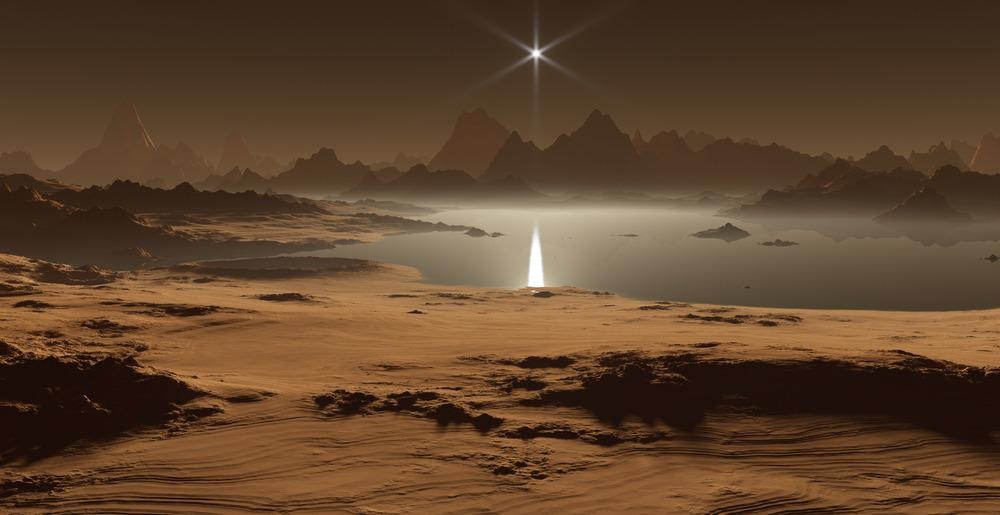
Image Credit: Jurik Peter/Shutterstock.com
Studies of extraterrestrial atmospheres are enhanced with atomic force microscopy – a scanning probe microscope boasting extremely high resolutions, which make it possible to perform advanced particle analysis at the nanoscale.
Experiments by a team of IGM researchers have recently successfully replicated the atmospheric configuration of Saturn’s largest moon, Titan, in laboratory conditions.
Using the relatively new atomic force microscopy (AFM) technique on this gas sample, the scientists were able to perform particle analyses that may provide information about Earth's conditions when life was in its early stages.
What Was on Titan?
Astronomers and geologists have been interested in Saturn’s largest moon for decades. According to scientists, the fog covering the planet in a brownish-orange haze is similar to that which covered Earth 2.8 billion years ago.
Therefore, finding ways to study it has been a critical research focus for many. Scientists think that we will discover valuable information about Earth as it was when life was first beginning to form, and perhaps learn more about the conditions required for life to seed and then flourish as it has here on our planet.
The internationally supported Cassini-Huygens mission landed a probe on Titan in 2005 and performed several flybys of the satellite throughout its mission.
Video Credit: space and astronomy/YouTube.com
How Was Particle Analysis Used in the Cassini-Huygens Mission?
The NASA spacecraft Cassini was launched along with ESA’s Huygens landing probe on the Titan IVB/Centaur rocket in 1997. Huygens separated from Cassini after their voyage to Saturn via Venus, Earth, and Jupiter on 14 January 2005. It then descended to Titan with a parachute and broadcast data back to Earth for 90 minutes.
Huygens was the first spacecraft to land in the outer solar system and the first-ever landing on a moon other than our own. The thick fog surrounding Titan also gave us our first look at the moon’s surface.
A total of 350 photographs were sent back to Earth during the Huygens landing. Spectral radiometry and other photographic methods obtained data for mass spectrometry and infrared spectroscopy of the moon’s atmosphere.
Recreating Titan’s Atmosphere on Earth
To better understand the chemical configuration and reactants present in this atmosphere, further particle analysis would be needed. To perform this, researchers at IBM have been working on recreating Titan’s atmosphere in laboratory conditions on Earth.
The data gathered from the Cassini-Huygens mission was enough for scientists to identify the air's macro-molecular configuration on Titan. Using this, they chemically recreated this air condition in steel boxes on our planet.
Here, they were able to use AFM to perform more advanced particle analysis on Titan’s atmosphere. AFM is a type of scanning probe microscopy that records atomic forces to create extremely high-resolution imaging at the nanoscale.
In AFM, a probe with an extremely sharp tip (just nanometres thick at its narrow end) is scraped over the sample. Sensors attached to the probe record tiny atomic forces and send that data to a computer for imaging.
What Did AFM Tell Us About Titan’s Atmosphere?
Titan’s atmosphere is made up of solid nanoparticles suspended in a thick gas. This organic gas mixture is one of the most complicated organic materials that we know of in the solar system.
Particle analysis performed in situ by the Cassini spacecraft had already revealed much about the large moon: mass spectrometry showed that Titan’s is rich in nitrogen, and infrared spectroscopy demonstrated poly-aromatic-hydrocarbon (PAH) signatures in its atmosphere. These findings indicate that the moon is generally made up of nitrogenated-polycyclic aromatic hydrocarbon (N-PAH) molecules.
AFM performed on a recreated atmosphere provided the imaging for key chemical structures within this gas mixture. The atomic resolution this imaging provides can now enable researchers to link up the known atmospheric gas reactants on Titan and the macroscopic structure of its foggy atmosphere.
To gain the resolution required to accurately identify and discover molecules and chemical reactions in the analog atmospheres recreated in the laboratory, the IBM team relied on the latest in AFM technology – AFM with a functionalized carbon tip. This enabled even higher resolution and fidelity.
What Can AFM Tell Us About Earth’s Atmospheric History?
The thick brownish-orange haze around Titan is similar to the fog covering Earth 2.8 billion years ago. This cloud filled with organic matter is believed to be a key factor in the first form of life on this planet.
Researchers hope that the advanced particle analysis made possible by technology such as AFM holds the key to better understanding this complex organic material. Such an understanding will inevitably unlock a greater perception of the conditions required for life to form and – as it has on Earth – flourish.
References and Further Reading
January 2005, Charles Q. Choi 14. n.d. “Huygens Probe Returns First Images of Titan’s Surface.” Space.com. Accessed March 3, 2021. https://www.space.com/688-huygens-probe-returns-images-titan-surface.html.
Schulz, Fabian, Julien Maillard, Katharina Kaiser, Isabelle Schmitz-Afonso, Thomas Gautier, Carlos Afonso, Nathalie Carrasco, and Leo Gross. 2021. “Imaging Titan’s Organic Haze at Atomic Scale.” The Astrophysical Journal 908 (1): L13. https://doi.org/10.3847/2041-8213/abd93e.
Disclaimer: The views expressed here are those of the author expressed in their private capacity and do not necessarily represent the views of AZoM.com Limited T/A AZoNetwork the owner and operator of this website. This disclaimer forms part of the Terms and conditions of use of this website.